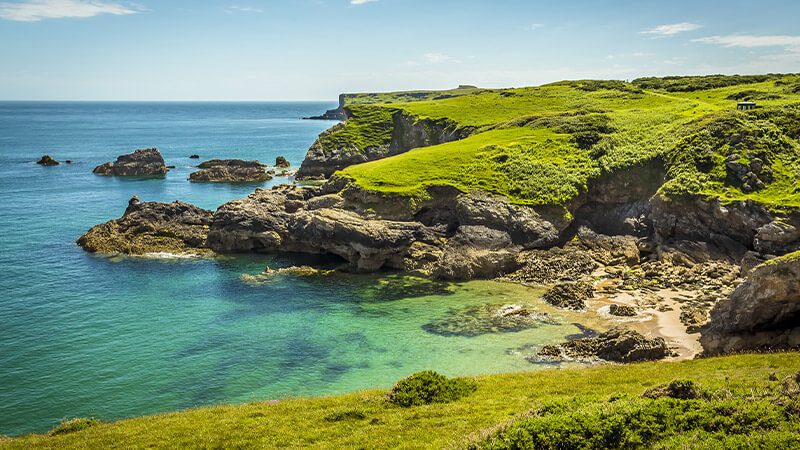Ajanta caves are a group of 29 Buddhist cave temples. Hiding in the hills of northwest India, about 200 miles from the busy streets of Mumbai, lies an exquisite jewel of art and religion.
The caves of Ajanta are in the shape of a mountain, which appears as a horseshoe around the Wangorah River. These caves are a unique symbol of one of the country’s distinctive artistic traditions – rock-cut temples. Some of these caves date back to the second century BCE. Comparing the Buddhist traditions of Theravada and Mahayana, the Ajanta caves feature some of the most precious works of Buddhist art that have been carved into them. These enchanting caves are located at a distance of 55 km from Jagaon city and just 105 km from Aurangabad in Maharashtra.
A brief summary | Ajanta Caves
Buddhism is mainly divided into two groups Hinayana and Mahayana. The Ajanta caves perfectly display the fine line of transfer between these two Buddhist sects. The Hinayana sect did not use to honor any deity, and the group worshiped stupas and similar rocks to embody the Buddha. On the other hand, the Mahayana sect used statues of various deities they believed in. It is an interesting fact that Ajanta caves include both the prayer hall (known as Chaitya) and the monastery. These caves include both Hinayana and Mahayana art, architecture, painting, and scripture. The caves representing Hinayana are cave numbers 8, 9, 10, 12, 13, and 15, while the caves belonging to the Mahayana sect are numbered 1, 2, 16, 17, 19, 26. In the Mahayana caves, there are 19 and 26 prayer halls.
Cave Nos. 1 and 2 display some fascinating paintings which depict Jataka Katha (Jataka Katha). Another common example of a marvelous sculpture is the Buddha statue that preaches in the seating position. Cave no. The 10 also depicts the Jataka Katha, and some beautiful images of the Buddha. Cave numbers 14 and 14 are examples of unique architecture through images of Baal and the young times of Lord Buddha, Jataka Katha, Saraswati Katha, etc. Caves from 20 to 25 were used for habitation in the old days. The caves from 1 to 8, except for numbers 4 and 7, and again from 14 to 17, are monasteries.
How to Get There
By air
The nearest airport to Ajanta Caves is Aurangabad (99 km).
By Rail
The nearest railway station is Jalgaon (59 km).
By Road
The caves are well connected to major cities like Mumbai, Jalgaon, Pune, Shirdi, Ahmednagar, Aurangabad, Nashik, Ahmedabad, Bijapur, Hyderabad, and Indore by excellent road network.
Cultural UNESCO World Heritage Site
Built-in: In the second century BC
Year of Inscription: 1983
Reasons for Inscription: Criteria number (i), (ii), (iii), and (vi). Ajanta Caves are precious examples of the creative brilliance of man. These caves are unique illustrations of prehistoric traditions, art, and architecture.
Category: Religious structure of Buddhists
Timing: 9 PM until sunset
Closed on: Monday
Read about more heritage site
Frequently Asked Questions About Ajanta Caves
Q. Who built Ajanta caves?
A – 20 caves were built during the Vakataka dynasty, during the reign of Harisena and were abandoned at the end of his reign. Inside the caves, you can also see pictures depicting the life of Gautama Buddha and stories from the Jataka tales.
Q. What is Ajanta caves famous for?
A – A group of 29 caves, Ajanta is one of the finest examples of some early Buddhist architecture, cave paintings and sculptures. These caves include chaitya halls or temples, dedicated to Lord Buddha and viharas or monasteries, which Buddhist monks use to meditate and study Buddhist teachings.
Q. Who destroyed the caves of Ajanta?
A – In 1682, Aurangzeb, a Muslim ruler, hired 1000 workers for only three years to completely destroy this temple.
Q. Where are the caves of Ajanta located?
A – Ajanta Caves, Buddhist Rock-cut Cave Temples, and Monasteries, located near Ajanta Village, North-Central Maharashtra State, Western India, are celebrated for their wall paintings.
Q. What are the main features of Ajanta’s painting?
A – Ajanta is a place where many caves were hollowed out of the hills for centuries. Most of these were Buddhist monasteries while some were decorated with paintings. The inside of the caves is dark and so most of these paintings are made in the light of torches. The colors are vivid even after 1500 years.
Q. Which is the oldest cave of Ajanta?
A – Spink states that Cave 8 is probably the earliest cave of the second period, its temple being a “later thought”. According to Spink, it may be the oldest Mahayana monastery excavated in India.
Q. Why is Ajanta’s painting so valuable?
A – The UNESCO heritage site of Ajanta caves is located in Aurangabad, Maharashtra. These caves were excavated as part of the first wave of cave architecture in India. It became an important center of Buddhism and art under the enlightened patronage of the Vakataka rulers.
Q. What are the characteristics of Ajanta caves?
A – Ajanta has thirty caves, each dedicated to the life of Buddha. Each cave is filled with sculptures, wall murals, and roof paintings. Although most of the site has collapsed, what is left in Ajanta gives a glimpse of the artistic traditions of ancient India.
Q. How were Ajanta caves built?
A – 30 enchanted Buddhist prayer halls and monasteries, such as by sorcery, a horseshoe-shaped rock 450 km (280 mi) east of Mumbai, in a mountainous region in the state of Maharashtra, India. Was engraved, accidentally ‘discovered’. 1819.
Q. What is the best time to visit Ajanta Caves?
A – The time between June and March is considered to be the best time to visit Ajanta. Monsoon (June to September) and winter (November to February) are the best seasons to see caves, as the weather is quite pleasant during this time.









